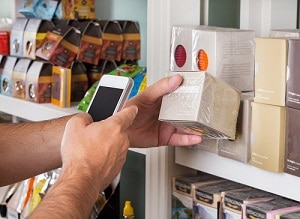 Today the definition of the word brand has evolved to mean reputation, and even feelings about a product, service, organization, or person. This is especially true of so-called personal branding. We now regularly use terms such as, “That’s going to help (or hurt) their (a person’s) brand.” It’s like we were suddenly all running for office. Our campaign is to establish ourselves as being for this or that issue, or knowing about this or that subject. All this is to establish a reputation. But how far should we take it? Is a personal brand for a customer base? Or should it be used strictly for a fan base? At what point do we stop using the term “brand” to define the impression of someone’s reputation?
Today the definition of the word brand has evolved to mean reputation, and even feelings about a product, service, organization, or person. This is especially true of so-called personal branding. We now regularly use terms such as, “That’s going to help (or hurt) their (a person’s) brand.” It’s like we were suddenly all running for office. Our campaign is to establish ourselves as being for this or that issue, or knowing about this or that subject. All this is to establish a reputation. But how far should we take it? Is a personal brand for a customer base? Or should it be used strictly for a fan base? At what point do we stop using the term “brand” to define the impression of someone’s reputation?
We recently did an interview with Ben Steverman of Bloomberg.com. During the interview, he asked us what we thought of the new use of the word “Brand” as it applies to people.
Can a person be branded like a can of beans? When you see the can, you think of your experience with the beans, how they tasted, how much they cost, their availability, and their value relative to other brands of beans. You think of their marketing, where and how they were grown, their consistency and dependability. All that is summed up in your image of the can of beans’ brand.
Individual Personal Branding Through Social Media
Today, thanks to Facebook, LinkedIn, and Twitter, we are all doing our fair share of individual personal branding. We carefully choose the pictures and the messages we want to post to give a certain impression about our interests, skills and preferences. To the degree that people who do not know us see only this information. We are branding ourselves in their minds. Their first impression is what they see on media and they often have no other way of formulating an opinion. Their image of your personal brand is refined as they discover more about you through the pictures, videos, and messaging found on your various sites and pages.
Commercial Personal Branding
Commercial personal branding takes it to the next level with the offering of services or products. Now, add endorsements and events. Your goal is to become a go-to person and a thought leader in a specific area. Since media can’t measure the value of content, viewers still base their first impressions on number of likes or followers.
Some media, such as Facebook, have replaced daytime TV. Posting entertaining pictures of kittens will certainly achieve more hits and likes than a thoughtful insight or even valuable content. However, the number of hits and likes remain impressive to first-time viewers. It is a metric you should not ignore, no matter how they are garnered.
Would you buy the can of beans with the most hits if you knew they got those hits by pushing pictures of cute kittens? Would that make the beans taste better? Or would you think the bean brand was just working the system? That may get you to buy the beans the first time. But ultimately, you will taste the beans and that will form your predominate opinion.
Individual personal brand and commercial personal brand have blended together in the use of the term “personal brand.” But many of the metrics used to measure the popularity of each are the same.
Ultimately, your commercial personal brand is all about the value of your content. The success of your commercial personal brand hinges on the lasting impression formed by your customers and clients. But now, in the early days of the internet, cute kittens might get their attention long enough to discover your content.
We wonder if anyone has thought of putting a cute kitten on a can of beans…



